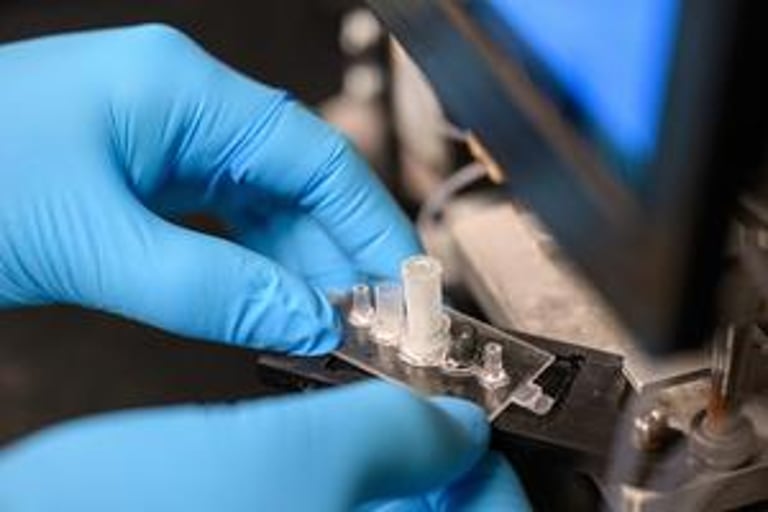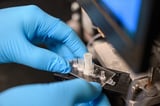Notre Dame Researchers Unveil Rapid, Low-Cost Device for Glioblastoma Diagnosis
August 27, 2024
Researchers at the University of Notre Dame have developed an automated device capable of diagnosing glioblastoma, an aggressive brain cancer, in under an hour.
Glioblastoma is known for its rapid progression and poor prognosis, with an average survival time of only 12 to 18 months following diagnosis.
This innovative device aims to enhance early detection of glioblastoma, potentially improving survival rates for patients.
The diagnostic tool utilizes a biochip that employs electrokinetic technology to accurately detect active Epidermal Growth Factor Receptors (EGFRs) in extracellular vesicles.
The biochip features a compact, inexpensive electrokinetic sensor that enhances diagnostic accuracy by forming multiple bonds with extracellular vesicles.
Synthetic silica nanoparticles are integral to the device, signaling the presence of active EGFRs through a measurable voltage shift when glioblastoma is detected.
The charge-sensing strategy employed in the device minimizes interference from traditional diagnostic technologies that rely on electrochemical reactions or fluorescence.
Each test requires only 100 microliters of blood and can be completed in less than an hour, making it a practical option for rapid diagnosis.
The device consists of an automation interface, a portable testing machine, and a biochip, with each biochip costing less than $2 to manufacture.
The study was co-authored by Hsueh-Chia Chang and Satyajyoti Senapati, with funding from the National Institutes of Health Common Fund and collaboration from Vanderbilt University and other institutions.
Blood samples for testing were provided by the Centre for Research in Brain Cancer at the Olivia Newton-John Cancer Research Institute in Melbourne, Australia.
While initially developed for glioblastoma, researchers are exploring the adaptation of this technology for diagnosing other diseases, including pancreatic cancer, cardiovascular disease, dementia, and epilepsy.
Summary based on 4 sources
Get a daily email with more Science stories
Sources

ScienceDaily • Aug 27, 2024
Researchers develop affordable, rapid blood test for brain cancer
EurekAlert! • Aug 27, 2024
Researchers develop affordable, rapid blood test for brain cancer
Medical Xpress • Aug 27, 2024
Researchers develop affordable, rapid blood test for brain cancer
Neuroscience News • Aug 27, 2024
Blood Sample Allows for Rapid Detection of Brain Cancer - Neuroscience News